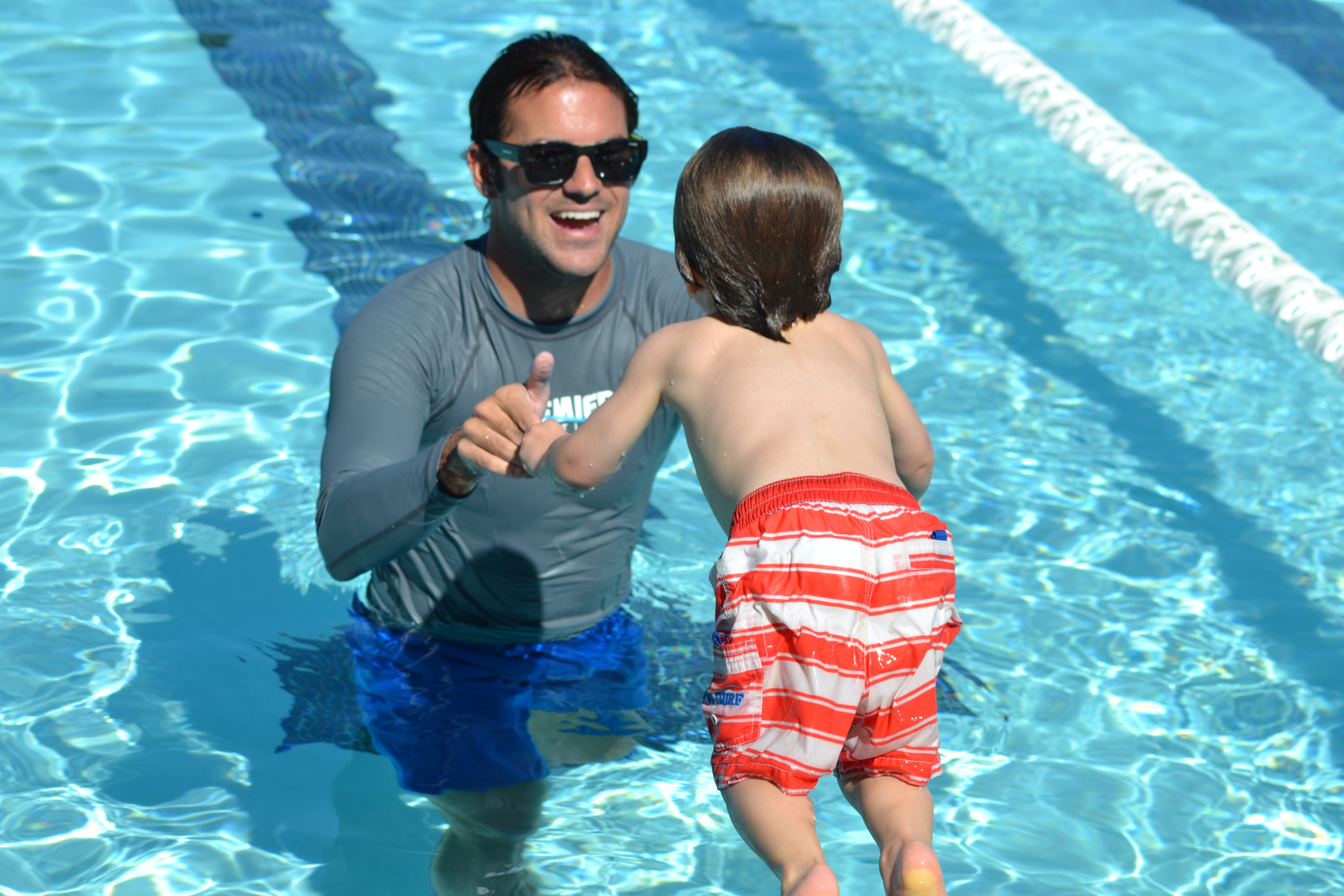
I have been teaching kids and adults how to swim for almost 20 years now. Throughout those years I have taught for both the American Red Cross and for private companies that have developed their own curriculums. With both programs, the parents were always the same. They were always looking for their kids to learn as fast as possible. The best way to accomplish this is to have a lesson every day, but when it is not summer, this is very hard to do for most families.
More Swimming- This answer seems obvious but it is really the most important thing you can do. If you have your own pool at your house or a community pool that you can use, a day of play at the pool can be just as beneficial as an actual swim lesson. During these times you don’t need to teach your kids as if you are the swim instructor but instead allow them to explore swimming on their own. However, you should try to reinforce any verbal cues that your swim instructor uses to keep things as consistent as possible. You will find that in the more care free setting of playing at the pool, your swimmer will relax a little bit more and start to really dare themselves to do more and more in the pool.
Practice Skills Out of the Water- Many of the movements that your new swimmer will be asked to do are not ones that we typically do in our day to day lives. In learning to swim, correct repetition is key to develop good muscle memory of a specific movement. For younger swimmers under the age of 5, there are a few skills that are easy to help them with at home; flutter kick with pointed toes, arm strokes for freestyle, and breath holding. All of these skills can be practiced at home and without any water.
- Flutter Kick- The hardest part of this skill for new swimmers is keeping their legs straight with very little bend at the knee. A great way to practice is at home on their bed. The natural spring to the mattress will act like a drum when they lay on their stomach and kick the bed. If you hold your hand over their feet as they kick, you will see it will help them keep small fast kicks with relatively straight legs.
- Practice Freestyle Arms- When younger swimmers first start to use their arms to swim freestyle it can be an awkward movement for them. Try to find a few times a week to show them the full range of motion their arms have when swimming.
- Breath holding- For younger swimmers, it can sometimes take a while for them to learn to fully close their mouth and not blow out their nose when they are attempting to hold their breath. Simply going over this skill with them a few times a week outside of the water can speed this process up and help to avoid unwanted water in their nose when they are in their lessons.
Talk to your swimmers- The more that you talk about swimming and keep it fresh in your new swimmers mind, the more they will remember. At our swim school, Premier Aquatics, in Aliso Viejo, most swimmers are only swimming once or twice a week. This means there are 5 to 6 days a week they are not swimming. With that amount of down time, it is not surprising that younger swimmers will forget newer terms that their instructors may have introduced to them.
At Premier Aquatics, we do offer a program called "Fast Track" in the Spring and Summer, that consists of 8 total lessons, with children swimming M-Th for two weeks. This program is designed to be an intensive to help younger kids retain a lot of information and skills in a short period of time! If you live in the Orange County area, definitely check it out!